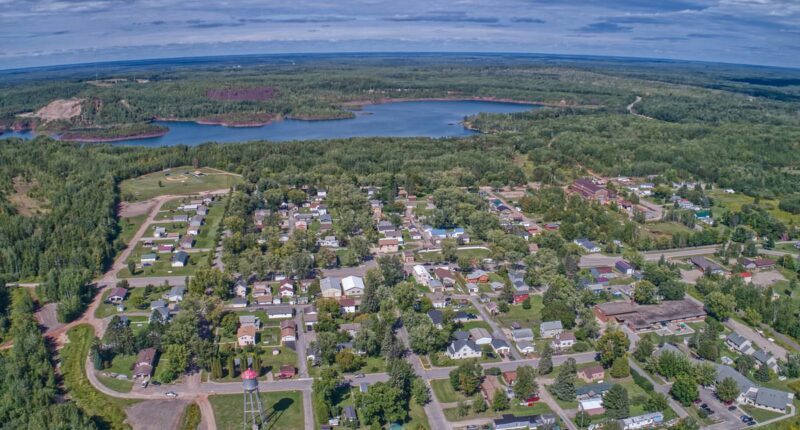Share this @internewscast.com
Minnesota may be on the verge of tapping into a lucrative clean energy source, as potential hydrogen reserves could be hidden beneath its soil.
This state, known as the North Star State, is part of a substantial region in the United States that might be harboring geologic hydrogen—a gas capable of burning without emitting carbon dioxide, unlike other fossil fuels.
The areas showing the most promise for these reserves are in the southeastern corner of Minnesota and along its western edge.
Alongside Minnesota, states such as Wisconsin, Kansas, Iowa, Michigan, Arizona, and Colorado are believed to lie atop this valuable resource, according to projections by the US Geological Survey (USGS).
“This map is exciting because it suggests that several regions in the US could indeed have underground hydrogen resources,” stated Sarah Ryker, the USGS associate director for energy and minerals.
For many years, it was widely assumed that naturally occurring hydrogen did not gather in sufficient amounts to be viable for energy use, making these findings particularly significant.
With the prospect that there is significant amounts of hydrogen beneath the surface, drilling companies across Minnesota are hoping to begin exploring for the gas.
Three companies have purchased mineral rights and applied for permits in the Iron Range of the state, according to The Minnesota Star Tribune.

Minnesota could be sitting on millions of dollars of clean energy as possible hydrogen reserves may be sitting underneath the surface

America’s Dairyland is one of the many states across the Midwest and Great Plains – including Kansas , Iowa , Michigan , Arizona , Colorado , and more – that have the potential to be sitting on a big moneymaker, the US Geological Survey (USGS) predicted (pictured: a drill)
The production and use of hydrogen gas can help lower carbon emissions, especially if used by heavy industries like manufacturing, and could make Minnesota a key player.
‘We’re talking about directly powering data centers… also sustainable aviation fuel. We’re talking long-haul shipping and trucking. So, it’s really like this Swiss-Army-knife resource that can clean up multiple large sectors that are hard to clean up,’ Kristen Delano, an executive for hydrogen exploration company Koloma, told The Tribune.
‘We’re raring and ready to go.’
Pulsar Helium, a Canadian company, and Orvian Natural Resources are also talking to Minnesota officials, the outlet said.
Mike Liljegren, assistant director of the Minnesota Department of Natural Resources’ lands and mineral division, told The Tribune that companies have the green light to start exploring for hydrogen.
However, they cannot extract the gas quite yet.
America’s Dairyland doesn’t have regulations in place for gas extraction – something lawmakers are currently working on.
The final draft of the new rules aren’t expected until late 2026 or early 2027, leaving companies a long time to sit on the potential gold mines.

Mike Liljegren, assistant director of the Minnesota Department of Natural Resources’ lands and mineral division, said some companies have already been greenlight to exploring hydrogen. However, they are not legally allowed to extract it yet
The US produces 10 million metric tons of hydrogen per year. Most of it is a byproduct of petroleum refining.
Creating hydrogen gas artificially is expensive and requires a lot of labor, making it a nonviable endeavor. Extracting it naturally not only helps the environment, but is cost-effective.
The Biden Administration set aside billions to fund production hubs in the Midwest.
The Inflation Reduction Act also currently offers a credit for hydrogen production, which will end in 2028.
Despite the positive environmental impact, some experts are worried extracting hydrogen could become like fracking, the method used to extract natural gas and oil from rock formations.
Fracking has been controversial for years over concerns it will contaminate water and release methane gas.
However, state officials and hydrogen companies said there should be no worry as it is a different process, The Tribune reported.






